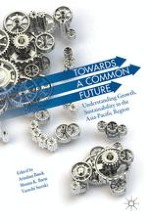2017 | OriginalPaper | Chapter
14. Real Exchange Rate, Trade Balance and Deindustrialization in Indonesia
Authors : Fithra Faisal Hastiadi, Amelia Nurunnisa
Published in: Towards A Common Future
Publisher: Springer Singapore
Activate our intelligent search to find suitable subject content or patents.
Select sections of text to find matching patents with Artificial Intelligence. powered by
Select sections of text to find additional relevant content using AI-assisted search. powered by
